Nature Knows and Psionic Success
God provides
Vitamin C Cannot Prevent Colds, But It Can Do So Much More

There is a stereotype that vitamin C is only beneficial for preventing the flu, which is why we usually start supplementing it and eating more foods that contain vitamin C during flu season. But recent research shows that there is no relationship between vitamin C and cold prevention, which may falsely render vitamin C useless for the average consumer. In this article, we would like to stress the importance of meeting your daily value of vitamin C by highlighting all the important functions and health benefits it provides for the body. Although vitamin C may not protect you from the flu, it can do wonders for your immune system, heart, skin, and the nervous system. 1. Slows Down Cognitive Decline Even short-term vitamin C deficiency is famously associated with brain fog and memory problems, and scientists believe this is due to oxidative stress of your central nervous system. Vitamin C belongs to the class of chemicals called antioxidants, the major role of which is to prevent oxidative stress. In fact, vitamin C is one of the most powerful antioxidants known, and luckily, one of the most common ones. Furthermore, it was found that people who suffer from memory problems and dementia often have low levels of vitamin C in their blood, which further accentuates the crucial role of this vitamin for our memory and thinking. 2. Boosts Collagen You may be familiar with collagen production if you have an interest in anti-aging skin care, as this compound gives our skin a youthful bounce and tautness. In fact, the older we get, the less collagen our skin produces, and so we get wrinkles. But collagen is important for more than just skin health, it plays a significant role in healing our bones, cartilage, and skin, which is also why you […]
For strength, longevity and happiness, take a hike!

It’s been many years since I did any hiking. I’m talking decades here. But with the summer coming, I’m considering buying a pair of boots and hitting the trail. Not a difficult trail, mind you. After all these years, I consider myself a novice hiker again, and I wouldn’t tackle any strenuous climbing or anything I couldn’t complete in a few hours at a leisurely pace. But you might be thinking, why not just go for a good, long walk around the neighborhood? Wouldn’t that be just as good, and less hazardous? Less hazardous, perhaps. Hiking or walking an uneven trail does leave you open to rolled or twisted ankles and sprained knees, not to mention bug bites. Nevertheless, I’m headed for some local trails this weekend. Let me tell you why. The difference between walking and hiking At first glance, walking and hiking may not seem that different. But the benefits of hiking are indeed different from the benefits of a stroll around the block. Daniel Ferris is a professor of engineering and biomechanics at the University of Florida. He explains that walking on flat terrain allows the body to just keep going without a lot of effort. He compares this to the perpetual swinging of a pendulum. Ferris found that when you walk on uneven terrain, be it a nature trail or a sandy beach, your body uses 28 percent more energy. Not only that, but his 2013 study at the University of Michigan uncovered benefits that go beyond calorie burning. When you navigate uneven ground, “you’re turning on and strengthening a lot of muscles in your hips and knees and ankles that you don’t normally use.” Using and building those neglected muscles can improve your balance and stability, which can protect you from falls. Also, using […]
New Study Reveals Alzheimer’s Supplement Can Trigger a Lucid Dream

Originally published on www.humanoriginproject.com A supplement that stops the breakdown of the acetylcholine neurotransmitter in the brain is a useful technique to trigger lucid dreams Throughout human history, dreams were regarded as a sign of what might happen in your life and the world. Today researchers are learning more and more about how sleep and the brain control your dreams. The human brain is wired to do many things during the stages of sleep. We now understand different types of dreams and classify them into categories. Lucid dreaming is a term scientists use to describe when you know the situation you are experiencing, is in fact, a dream. It’s a scenario with exciting possibilities. Being able to control your dreams may have many benefits. These may include: Neuroscientists now understand the chemistry of dreams and how you can use specific supplements to trigger lucid dreams. Research has investigated a supplement called galantamine to treat Alzheimer’s disease. It acts on enzymes that break down a neurotransmitter known to trigger dreams during sleep. Brain conditions like Alzheimer’s disease associate with sleep disorders. Even a few nights of sleep deprivation can increase the build-up of Amyloid plaques in the brain that contribute to mental decline. (1) However, new studies show galantamine may also trigger a lucid dream. In this article, we’ll explore: Why do Dreams Happen in REM Sleep? Let’s take a quick look at the neuroscience of sleep and dreams. In mammals and birds, sleep is split into two types: Non-Rem Sleep (NREM) — Deeper sleep when the brain directs cleansing of the bodily organs (eg. Digestive system). Slower deeper brain waves (Delta waves) occur in these phases. REM (Rapid Eye Movement) — When the brain undergoes self-cleansing. Faster brain waves (Beta Waves) are recorded that are similar to wakeful brain […]
Research suggests cannabis can relieve symptoms, pain associated with MS

( Natural News ) Multiple sclerosis (MS) is the world’s most commonly diagnosed debilitating neurological condition , and although it is most often diagnosed in young adults between the ages of 20 and 50, it can strike anyone, at any time. The National MS Society estimates that close to 1 million Americans are living with MS, with 200 new cases diagnosed each week. There is no cure for MS, and treatments are generally aimed at dealing with the symptoms of the disease. However, like all chemical medications, these treatments carry side effects including depression, apathy, extreme fatigue and mood swings. Happily, a growing body of evidence supports the use of medical marijuana – which has far fewer side effects than pharmaceutical medications – for the effective treatment of pain, spasticity and other MS symptoms. (Related: Research shows marijuana can be effectively used to treat multiple sclerosis .) What is multiple sclerosis? Which symptoms will be caused by the disease, and the severity of those symptoms, is different for each person diagnosed with MS. However, for all patients, it is a long-term disease that to some extent attacks the spinal cord, brain and optic nerves of the eyes. MS can affect balance, vision and muscle control, and can cause severe pain. Other symptoms can include fatigue, difficulty walking, sexual dysfunction, tingling or numbness of the extremities, poor bladder control, depression and trouble concentrating. For some, the symptoms are mild and cause hardly any discomfort, while for others, they can be debilitating enough to interfere with daily life and make movement and everyday tasks extremely difficult. (Related: Treating multiple sclerosis .) The power of the elements : Discover Colloidal Silver Mouthwash with quality, natural ingredients like Sangre de Drago sap, black walnut hulls, menthol crystals and more. Zero artificial sweeteners, colors […]
Study says dementia affects even those who are “highly educated” – natural treatments are the answer
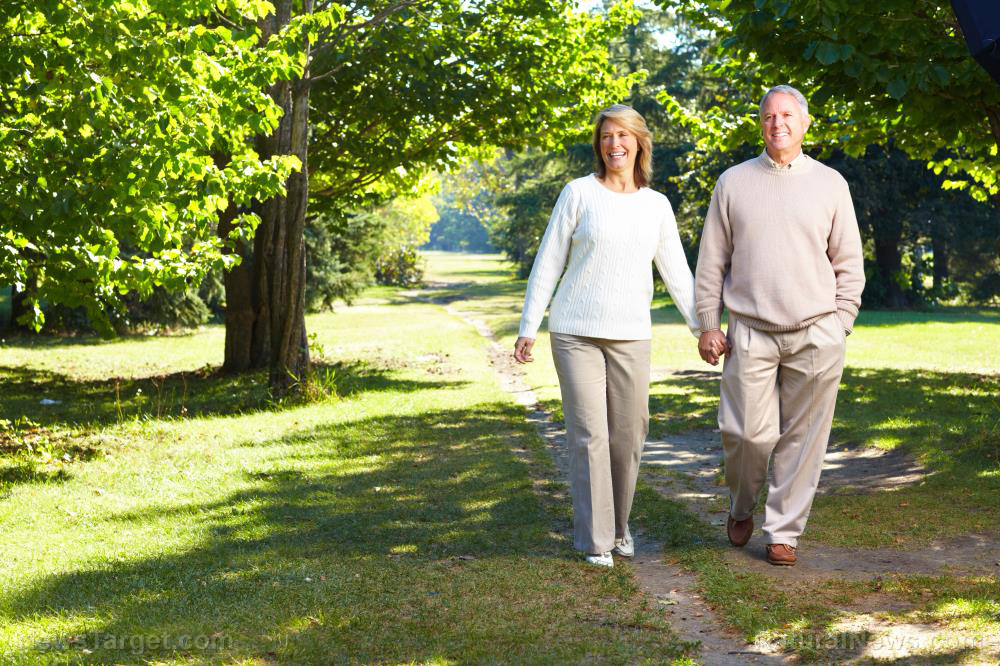
( Natural News ) Many factors can increase your risk of developing dementia, and there are those who believe that having a higher education can help lower your risk for this condition. However, according to an enlightening study, your education before you reach 20 years old is the crucial factor that can help protect you from dementia and Alzheimer’s disease. The study was published in the journal Neurology and was conducted by researchers from the University of California San Diego . The researchers said that attending university and having mentally stimulating jobs or hobbies aren’t as effective at lowering your risk. The results of their study also go against previous findings, which imply that keeping the brain challenged as you age can give you cognitive reserve and make your brain more resilient against Alzheimer’s and dementia. Higher education and dementia risk The researchers revealed that good early years and education in the teenage years are crucial to maintaining brain health. (Related: Healthy lifestyle proven to help prevent dementia: Four tips that work best .) They worked with over 1,000 men who served in the U.S. military from 1965 to 1975 for their study. At least 80 percent of those men reported no combat exposure. The researchers then used a standard test called young adult general cognitive ability, an IQ test used in the military, to reassess the brains of the ex-soldiers at age 62. During the assessment, the researchers also evaluated three things: How intellectually complex the ex-military men’s later careers had been, whether they had gotten further educational qualifications, and whether they had engaged in other intellectually challenging pursuits. The power of the elements : Discover Colloidal Silver Mouthwash with quality, natural ingredients like Sangre de Drago sap, black walnut hulls, menthol crystals and more. Zero artificial sweeteners, […]
Vitamin C for Stress, Collagen, Immunity
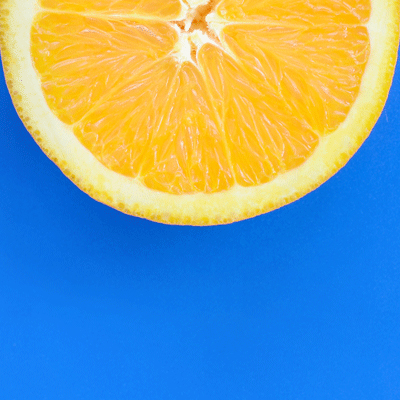
Vitamin C is a “Jack of all trades” in healthy physiology. Widely used for immune system support and as a general antioxidant, it plays many other important roles. Considerable information has been learned since Linus Pauling’s research on vitamin C. Some of the most intriguing findings may help today’s modern stress response, not only on immune system health and antioxidant functions, but it also includes the adrenal glands, stress hormones, and neurotransmitters. Here are some recent findings and pearls on vitamin C’s essential roles in your health. Vitamin C is a water-soluble vitamin found in fruits and vegetables and is added to some foods. Humans lack the ability to produce vitamin C compared to most other mammals, so we must obtain it in the diet. Vitamin C is also known as ascorbic acid. Red and green peppers, citrus fruits, kiwi, strawberries, broccoli, Brussels sprouts, cabbage, tomatoes, and cantaloupe contain about 30-90 mg of vitamin C per serving. Vitamin C is rapidly lost with cooking foods. Vitamin C levels are tightly controlled in the bloodstream with just small amounts present, but several other tissues maintain high concentrations often at 100 times more than in the bloodstream. The greatest concentrations of vitamin C are found in leukocytes, a type of white blood cell, the brain, pituitary gland, eyes, thymus gland, and the adrenal glands. Smaller amounts of vitamin C are found in the pancreas, liver, spleen, kidney, lung and heart. Antioxidant Vitamin C is an antioxidant which protects cells from oxidative stress. The FDA has stated that “vitamin C serves as an effective free radical scavenger to protect cells from damage by reactive oxygen molecules”. It helps to recycle and spare other antioxidants like vitamin E, lipoic acid, and the critical antioxidant enzymatic system glutathione. Ascorbic acid’s antioxidants effects help defend […]
6 no-drug solutions for brain fog

Read on to know effective ways to beat brain fog. © Shutterstock Sometimes your brain turns into a mush and your thinking centre shrinks. So, you lose clarity of thought, you are unable to concentrate, and your memory betrays you. This cognitive dysfunction is known as brain fog. It could be a short-lived condition triggered by acute stress or anxiety or a chronic condition resulting from some other medical conditions and drugs. Our brains relies on a lot of factors like nutrients, psychological condition, lifestyle, etc. to function optimally. That is why brain fog is often the outcome of mental fatigue, stress, lack of sleep, hormonal changes, a diet with insufficient nutrients, some medications and health conditions. Chronic stress may lead to depression which in turn can result in difficulty to focus or think. Lack of sleep, on the other hand, makes you fuzzy taking a toll on your brain’s capacity to concentrate and memorise. Endocrinological changes a sudden spike in the levels of hormones named progesterone and estrogen can affect your memory and cause short-term cognitive impairment. Some foods may also be the culprits behind this condition. Are allergic or sensitive to peanuts, dairy products or aspartame? Well, eating foods that your body reacts against, can also cause brain fog. While brain fog is a condition that is capable of impacting your personal and professional life negatively, there is nothing to panic. This is not an irreversible condition. Here are some effective ways to beat brain fog. Keep your sugar intake under control Eating foods loaded with sugar, especially processed and packaged foods, can give you a temporary sugar rush. But it is not good for your cognitive health. Increased glucose levels in your body can damage the protective layer of your gut formed by epithelial cells. Damage […]
Why do smart people smoke? Tobacco, a brief history
This month I’m in Japan and I’ve taken up smoking the pipe. Partly, I enjoy the taste and the ritual. I’ve never gotten into smoking cigarettes and don’t plan to start. And while I understand smoking can be addictive, I’ve not experienced it yet. If you’ve followed Creativindie for awhile, you’ll know I’m a fan for marijuana for creativity and productivity boosting. But I also travel full-time, and while recreational marijuana is legal in my home state of Oregon, it can mean a jail sentence in many other countries. The advantage of tobacco is that it’s a global habit; easy to buy and use anywhere. But does it do any good? The benefits would have to outweigh the potential health risks. I’m definitely not recommending tobacco use, but I do want to post an open-minded review and case study. Let’s start with a historical overview Tobacco was used extensively in the Americas, going back thousands of years; it had spiritual connotations, and was used in vision quests and ceremonies. Later, it also became used for quiet reflection and relaxation. Once it was discovered by Europeans, it became the most commercial product of all time. At first it was lauded as a healthy practice; and even when the health risks became obvious, use continued despite the warnings. What is it about tobacco that has made it so popular? The opening speech of Moliere’s Don Juan explains: “There is nothing like tobacco. It’s the passion of the virtuous man and whoever lives without tobacco isn’t worthy of living. Not only does it purge the human brain, but it also instructs the soul in virtue and one learns from it how to be a virtuous man. Haven’t you noticed how well one treats another after taking it. . . tobacco inspires feelings, […]
Foods To Boost Your Brain Power
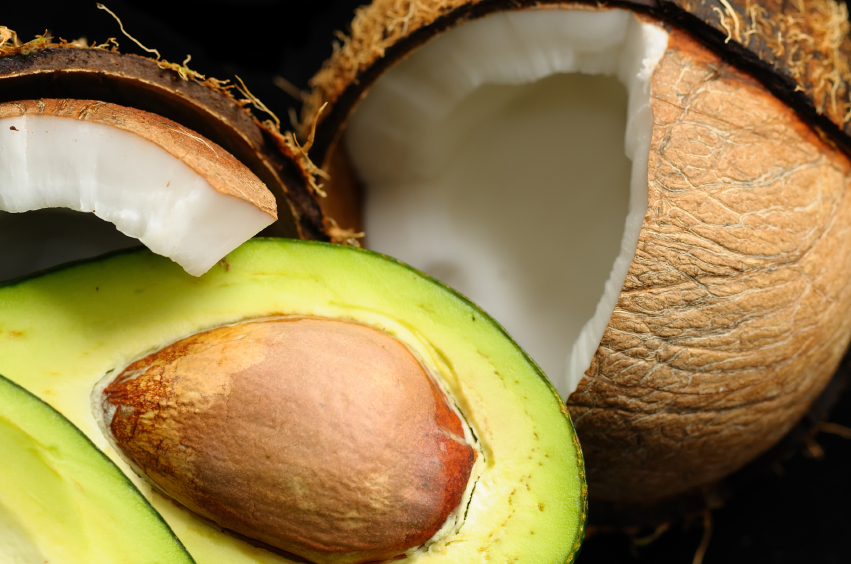
Related If you are not as sharp as you would like to be then sometimes addressing your diet can be a good place to start. Menopause definitely seems to see an increase in ‘brain fog’ and for that bioidentical progesterone can certainly help, but why not maximise your memory cells as much as you can? The good news is that you can improve your chances of maintaining a healthy brain if you add “smart” foods and drinks to your diet. Caffeine Can Make You More Alert There’s no magic bullet to boost IQ or make you smarter — but certain substances, like caffeine, can energize you and help you concentrate. Found in coffee, chocolate, energy drinks, and some medications, caffeine gives you that unmistakable wake-up buzz, though the effects are short-term. And more is often less as if you overdo it on caffeine it can make you jittery and uncomfortable. Sugar Can Enhance Alertness Sugar is your brain’s preferred fuel source BUT not refined sugar, but glucose, which your body processes from the sugars and carbohydrates you eat. That’s why a glass of fruit juice can offer a short-term boost to memory, thinking, and mental ability. Have too much, though, and memory can be impaired and so can the rest of you. Go easy on sugar itself, and sweeteners are no better, as they have been linked to heart disease and other conditions. Eat Breakfast to Fuel Your Brain We just don’t always feel like eating breakfast but studies have found that eating then may improve short-term memory and attention. Students who eat it tend to perform better than those who don’t and top of the brain-fuel list are high-fibre whole grains, dairy, and fruit. Just don’t overeat; researchers also found high-calorie breakfasts appear to hinder concentration so save […]
It is possible to enhance positive memories or suppress negative ones: Study
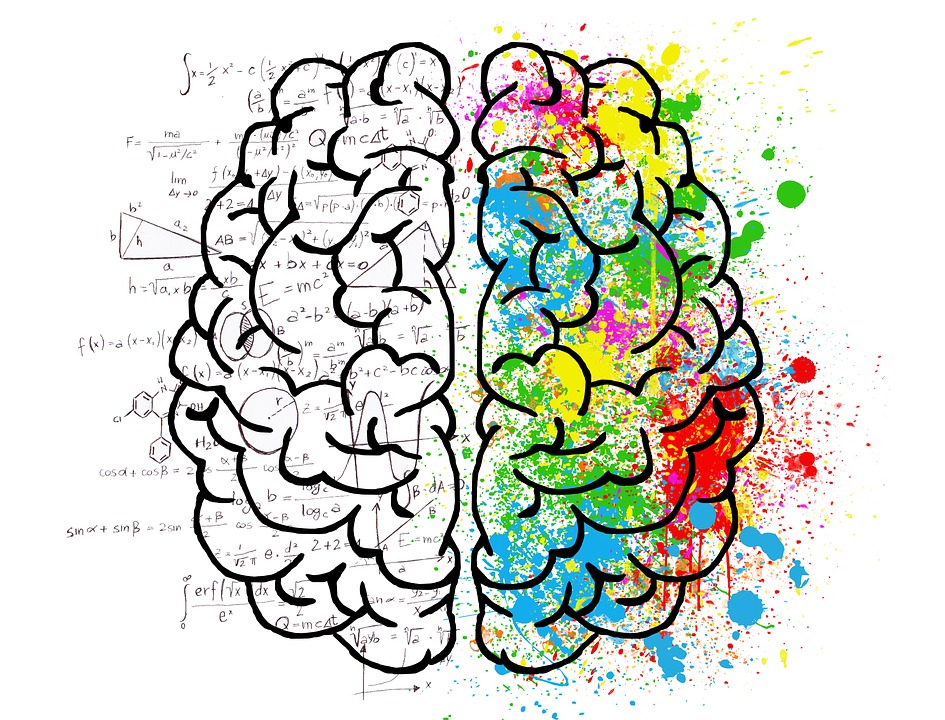
By artificially activating memory cells in the bottom part of the brain’s hippocampus, negative memories can become even more debilitating. Washington D.C. [USA], May 27 (ANI): New research suggests that memories are pliable if you know which regions of the brain to stimulate. According to a study, these findings could someday enable personalised treatment for people with post-traumatic stress disorder ( PTSD ), depression , and anxiety . Researchers believe that a small structure in the brain could hold the keys to future therapeutic techniques for treating mental health disorders and someday allow clinicians to enhance positive memories or suppress negative ones. Inside our brains, a cashew-shaped structure called the hippocampus stores the sensory and emotional information that makes up memories, whether they be positive or negative ones. No two memories are exactly alike, and likewise, each memory we have is stored inside a unique combination of brain cells that contain all the environmental and emotional information associated with that memory. The hippocampus itself, although small, comprises many different subregions all working in tandem to recall the elements of a specific memory. "Many psychiatric disorders, especially PTSD , are based on the idea that after there’s a really traumatic experience, the person isn’t able to move on because they recall their fear over and over again," says Briana Chen, first author of the paper. In their study, researchers show how traumatic memories–such as those at the root of disorders like PTSD –can become so emotionally loaded. By artificially activating memory cells in the bottom part of the brain’s hippocampus, negative memories can become even more debilitating. In contrast, stimulating memory cells in the top part of the hippocampus can strip bad memories of their emotional oomph, making them less traumatic to remember. The findings were published in the Journal […]
Researched Himalayan Salt Lamp Benefits, Myths & Warning
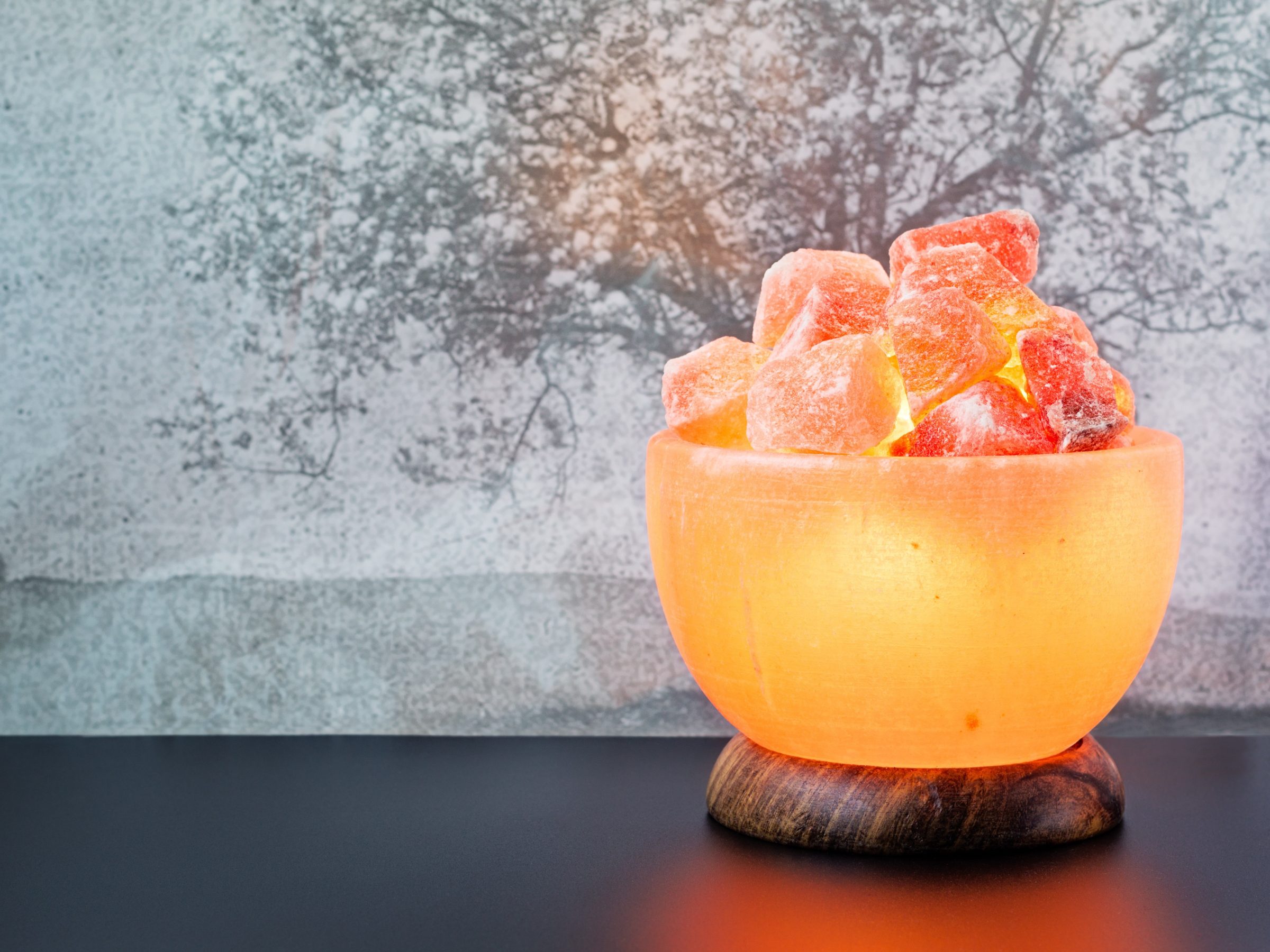
Nowadays, you won’t find a yoga studio without a Himalayan salt lamp lurking somewhere in the corner. Made of beautiful, pink crystals, these lamps emit a warm, dim light. But many claims go beyond their decorative value, saying that these lamps will clean your air, boost your mood, help you sleep, and more. Are any of these benefits backed by science? Read on to find out. It’s as simple as it sounds: place a light bulb inside chunks of Himalayan salt rocks, and you’ve got yourself a Himalayan salt lamp. They’re easy to spot, can be carved into different shapes, and emanate a warm, pinkish glow. Himalayan salt is obtained from one of the oldest salt mines in the world, located near the Himalayas (Khewra Salt Mine, Pakistan). It’s mainly composed of sodium chloride – just like regular table salt – but is higher in trace elements such as magnesium , potassium , calcium , and iron . These are responsible for its pink color [ 1 +]. Many people buy Himalayan salt lamps simply because they look good and their dim light feels soothing. But these lamps are often advertised as having many health benefits such as: Improving air quality Improving asthma and respiratory conditions Boosting mood Curbing anxiety Promoting sleep Preventing infectious diseases We’ll take a deep dive into all the alleged benefits to uncover which (if any) have scientific ground. But let’s start with the basics… Proponents of their health benefits claim that Himalayan salt lamps act via two main mechanisms: hygroscopicity and ion generation. Hygroscopicity may sound complicated, but it’s easy to grasp. Back in the 18th century, devices called hygroscopes were used to measure humidity (hydro=water, scopy=viewing). These are no longer in use, but the word “hygroscopic” remained. It simply means “the ability to […]
Breakthrough device can easily and accurately measure fluoride concentrations in water

( Natural News ) What if there were a quick, easy, and inexpensive way to test your drinking water at home or at work to determine just how much toxic fluoride it contains? Well, thanks to the dedicated work of researchers from Switzerland, now there is. A new study published in the Journal of the American Chemical Society highlights the amazing capabilities of the all-new SION-105, a portable measuring device that allows for virtually anyone to detect fluoride concentrations in water without the need for pricey machinery or large laboratories. According to the researchers from Ecole Polytechnique Fédérale in Lausanne who came up with this groundbreaking technology, what used to be possible only in well-equipped chemical laboratories can now be accomplished by any ordinary Joe or Jane, and with just a tiny bit of sample water. The SION-105, they report, is made from synthesized materials belonging to the “metal-organic frameworks” (MOF) family of compounds. These compounds, they further explain, are connected to organic ligands in one-, two-, or three-dimensional structures, offering incredible versatility for use in things like separating petrochemicals, detoxifying water, and even drawing out from a mixed substance specific compounds like hydrogen or gold. In this particular application, the MOF combinations built into the SION-105 are designed to interact with fluoride chemicals and change color from luminescent to a darker hue, indicating the presence of fluoride to such a precise degree that exact measurements of fluoride can be assessed. 100% organic essential oil sets now available for your home and personal care, including Rosemary, Oregano, Eucalyptus, Tea Tree, Clary Sage and more, all 100% organic and laboratory tested for safety. A multitude of uses, from stress reduction to topical first aid. See the complete listing here , and help support this news site. “Add a few droplets […]
Mark Sakraida: C’mon, let your self play. It’s good for you.

Mark Sakraida is the adventure therapy coordinator at Pathways, AAMCs substance use and co-occurring disorder treatment facility. (Courtesy photo) Most parents know about the importance of play for their children to develop essential life skills. But did you know about the importance of play for grown-ups, too? When you think of the word play, you probably imagine a group of children running around, chasing a colorful ball as they laugh and cheer. But play is so much more than that, and it’s not restricted to a certain age group. Play can be defined simply as engaging in activity for pure enjoyment and recreation. Play is for everyone, regardless of age (or profession) Support local journalism. Get four weeks of The Capital for 99 cents. » Former UK Prime Minister David Cameron admitted to playing Angry Birds on his phone as a way to decompress after a long day. Soccer star David Beckham credited Lego toys for saving his life, saying that they served as therapy for a brain injury he sustained after a jet crash. Barack Obama said he enjoyed playing basketball or golf as a way to relax. The best thing about play, besides the fact that it’s something you enjoy, is that while you’re doing it, it’s benefiting your overall wellbeing and impacting your health. It can fuel your creativity, emotional wellbeing and ability to problem solve. It’s part of evolution, but it’s also healthy During one of his TED talks, Peter Gray, research professor of psychology at Boston College , said, “from a biological evolutionary perspective, play is nature’s means of ensuring that young mammals, including young human beings, acquire the skills that they need to acquire to develop successfully into adulthood.” And more research is revealing that the benefits of play for adults are myriad: […]
10 Benefits of Fasting That Will Surprise You

Fasting is not a new thing. For centuries, the practice has played a central role in several religions and cultures. The month of Ramadan is known all over the world as a month of fasting for Muslims. Catholics fast on Good Friday and Ash Wednesday. Jews observe six days of fasting, the most known of which is Yom Kippur. Hindus observe a fast during the new moon and during festivals such as Puja, Saraswati and Shivarati. The Mormons observe a fast on the first Sunday of each month. Several other religions, including Buddhism, Taoism and Jainism have their own fasting practices. Many of these religions practice fasting because they believe that there is a connection between the physical and the spiritual state. In the last few decades, there has been an upsurge in the popularity of fasting. However, many of those who are adopting this age-old practice today are not doing so for religious reasons. They are doing it for health reasons. While people used to fast for spiritual reasons in the past, scientists and researchers have confirmed that fasting also provides numerous health benefits. Below are 10 benefits of fasting that will surprise you and hopefully give you the motivation you need to get started with the practice. FASTING HELPS YOU LOSE WEIGHT For those looking to lose some weight, fasting is one of the quickest and safest ways to get you there. Normally, when you eat, your body burns the food you ate to provide fuel for your body. Any extra food that does not get used up as fuel is converted into fats and stored within the body for future use. This is what leads to weight gain. When you start fasting, there is less food to convert into energy, therefore your body is forced to […]
Essential Oils: Main Benefits and 101 Uses

Essential oils have been used for thousands of years in various cultures for medicinal and health purposes. Because of their antidepressant, stimulating, detoxifying, antibacterial, antiviral and calming properties, they are recently gaining popularity as a natural, safe and cost-effective therapy for a number of health concerns. There’s no wonder why, considering the high cost of healthcare bills and the side effects of conventional medications, adding such oils to your personal medicine cabinet and lifestyle can make a world of difference. This is especially true because essential oils benefits are vast and essential oils uses range from aromatherapy, household cleaning products, personal beauty care and natural medicine treatments. The particles in essential oils come from distilling or extracting the different parts of plants, including the flowers, leaves, bark, roots, resin and peels. In fact, just one drop of an essential oil can have powerful health benefits. What is an essential oil? Typically created through the process of distillation — which separates the oil and water-based compounds of a plant by steaming — they are highly concentrated oils that have a strong aroma. In fact, sometimes they are called volatile aromatic oils because of their high concentration of the aromatic compounds. They also are simply called aromatherapy oils. How do essential oils work? By concentrating the oils of these plants, you are literally separating the most powerful healing compounds of a plant into a single oil. So, are you ready to harness the power of the world’s most proven therapeutic compounds? Are you ready to learn which pure, organic oils to use in your essential oil diffuser or in other ways? Explore the many benefits and uses, and open your mind to a whole new way of preventing and reversing health conditions that you’ve been battling for years. Read more to […]
Greenpoint: Step away from the noise and reset your brain

Hiding out in a quiet place, even for a few minutes, can improve your outlook and your health. My daughter sometimes calls me midday, and we have a cup of coffee or take a coffee walk together while we’re talking. Last week, she kept getting interrupted as she walked through the city: “Hold on, a truck is passing” or “Wait a sec, I’m walking through construction” or “Oh no, I just walked into a high school dismissal!” She had a few hours between obligations and was looking for a quiet place to sit and knit. Or if not a quiet place, at least a place where the sound was natural and calming. She chose a midtown fountain surrounded by benches. The falling water drowned out the traffic. Finding quiet can be hard in the city that never sleeps and is constantly under construction. Sirens, jackhammers, subways, crowds, traffic … But you don’t have to be in New York City to be bombarded by noise. Quiet is in short supply most places. We wake up to alarms, go down to the kitchen where the fridge is humming and the coffee pot is groaning, grab the phone or turn on the computer to check email, the news, what our friends are up to. If we work in open offices, we hear everyone else’s ringing phone and all their conversations, too. We are overstimulated and overconnected, and bombarded by sound and images from the moment we open our eyes. Sometimes, even when we get outside for a solo walk, we forget to look around, to listen. We’re still buzzing. I walk the dog every morning, but there are some days where I’m rushing and my mind is racing, cataloguing the things I need to do that day and the next two. I’m […]
Can a common mineral deficiency explain PMS? Researchers say try this inexpensive, natural cure

( Natural News ) Many women dread “that time of the month,” when symptoms of impending menstruation like cramps, headaches, bloating, digestive problems, breast tenderness and irritability set in. Everyone has their own preferred method of dealing with premenstrual syndrome, whether it’s a hot water bottle, over-the-counter pain pills, or lots of naps. However, researchers may have found a more effective approach to PMS, and it comes in the form of magnesium. Not all women are affected in the same way, but around 75 percent of menstruating women will experience some form of PMS , which can range from very mild to nearly debilitating. For one out of every 20 women, it can be extremely severe, with symptoms like anger and depression, in a condition known as premenstrual dysphoric disorder. No matter where your PMS falls on the spectrum, magnesium can make a difference. This is particularly true if you happen to be one of the two thirds of Americans who fail to get enough of this important mineral. A magnesium deficiency increases smooth muscle contractility and prostaglandin levels, the inflammatory compounds behind period pain. Studies have shown that women who take 400 milligrams of magnesium each day experience reductions in the breast pain, sugar cravings, weight gain, headaches, dizziness and nervous tension associated with PMS. In a different study, 34 percent of the women who took a relatively conservative dose of 250 milligrams per day found PMS relief within three months. In a similar study, women noted improvements in PMS-related pain and mood in a randomized, controlled trial after just two months of magnesium treatment. 100% organic essential oil sets now available for your home and personal care, including Rosemary, Oregano, Eucalyptus, Tea Tree, Clary Sage and more, all 100% organic and laboratory tested for safety. A multitude […]
Forget foam. This fluid-filled helmet mimics your brain to protect your head

Fluid Inside In recent years one of the most important areas of research in the field of sports medicine has been the effects of head trauma on the health of an athlete. Research indicates that while a sudden, sharp strike to the skull can cause serious damage to the brain, frequent smaller impacts can cause as much or more trauma when repeated over time. Left unchecked, this can lead to memory loss, impaired vision, slowed reaction times , and in extreme circumstances even Parkinson’s disease or Alzheimer’s. With the severity of these injuries becoming more and more evident, sports equipment manufacturers are searching for new and improved ways to protect the brain. One such company has taken a very innovative approach, looking to the human body itself for cues. Using more than 25 of years of research related to head trauma, Fluid Inside has created an adaptable protective system that is based on the human body’s natural defenses. In order to protect our brain from potentially-damaging impacts, our bodies have evolved to include a thin layer of liquid that serves as a shock absorber of sorts. When our head hits something hard, or is struck by an outside object, it often causes the brain to slam into the side of the skull. The fluid that surrounds the brain is meant to slow down or prevent that impact from happening, thus avoiding or minimizing the trauma as much as possible “The fluid that we use inside the pod is a low-viscous, organic oil-based liquid that really isn’t all that unique or special.” Most of the time this defense system works very well, and we suffer little or no damage. But a particularly jarring hit can exceed the limits of the fluid, causing more serious damage. This can result in dizziness, […]
Husband-Wife Team Develop Brain Health Supplement

LANCASTER, Pa: For Tessa and Jordan Balencic, DO, the drive to develop safe, evidence-based supplements that support brain health and healthy aging is personal. Each of the co-founders of ERApeutics has a grandparent with incurable cognitive disorders Alzheimer’s disease and dementia. Their company’s first product, Prolimbic 29, helps people improve mental clarity. Each of us has a grandparent who is dealing with a form of cognitive impairment. And the number one complaint my patients have is fatigue and brain fog, so I am very close to the problem, said Dr. Balencic. While the science behind cognitive health products grows exponentially, my concern is that the number of companies making unsubstantiated and potentially harmful claims is also growing exponentially. Patients have come to my office with shopping bags full of supplements to sort through. I understand the confusion consumers face, Dr. Balencic said. When the Balencics founded ERApeutics, based in Lancaster, PA, they included ERA in the name because their goal is to bring a new era of honesty and transparency to the supplement industry. Prolimbic 29 is science-based and specifically designed to help people naturally improve their mental energy levels and beat brain fog, said Tessa Balencic. It raises brain-derived neurotrophic factor (BDNF) levels, and customers tell us it improves their memory, has a calming effect and improves their sleep. Most feel a positive difference the first day. When Can Supplements Be Dangerous? Dr. Balencic chose six natural ingredients for Prolimbic 29, and he says what the ERApeutics team left out of the supplement is important. Ginkgo biloba, for instance, is good for brain health, but it can raise blood pressure and can’t be taken if you’re on blood thinners, Dr. Balencic said. Caffeine can make people feel energized quickly, but caffeine can have serious adverse effects. Many patients […]
Health in Mind: Using the great outdoors to boost your wellbeing

South Downs Way Cuckmere Valley Evidence suggests that our mental wellbeing can be improved simply by being outside – whether exercising, socialising or just taking in the fresh air and sunlight. Amanda Elmes from the South Downs National Park Authority And with modern life becoming increasingly hectic taking the time to get outdoors is more important than ever. In October last year 10 GP surgeries in Scotland, specifically the Shetland Islands, began handing out what they called ‘nature prescriptions’ to patients to help treat mental illness as well as stress, diabetes, heart disease and other conditions. Patients were told to go walking on Shetland’s upland moors and directed towards coastal paths for bird watching. Although the nature prescriptions did not replace conventional medicines, they supplemented normal treatments. For Sue Forber, from local mental health charity Solent Mind, outdoor activity was a good way to boost wellbeing. ‘There’s a lot of evidence to show that getting some exercise, even in small ways, is beneficial for our mental health,’ she said. The South Downs Way spans Winchester to Eastbourne ‘You don’t have to pump iron at the gym or run a marathon – even a 10 minute walk in the fresh air can lighten our moods, reduce anxiety, and increase our energy levels. This is especially true if we can get out into green spaces such as local parks, coastal areas or gardens. For me, walking surrounded by nature is definitely a healing combination.’ Nicole Cornelius, the director of workforce at QA Hospital agreed. She said: ‘I have heard that some doctors do recommend exercise and being outside to help with mental health issues. ‘At QA we know that exercise is really important. We recognise that a lot of our staff, even though they are working hard, do still spend quite […]
